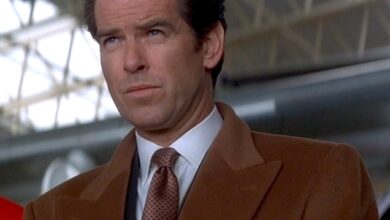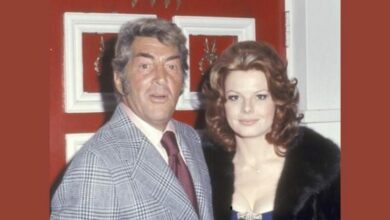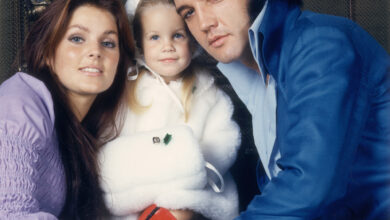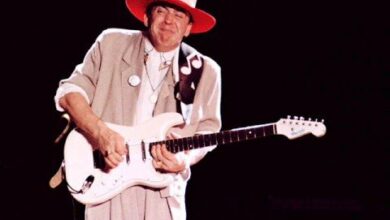GoldenEye: Pierce Brosnan and Director Martin Campbell reinvigorated James Bond for the post-cold war era with an excellent Bond film for the 90s
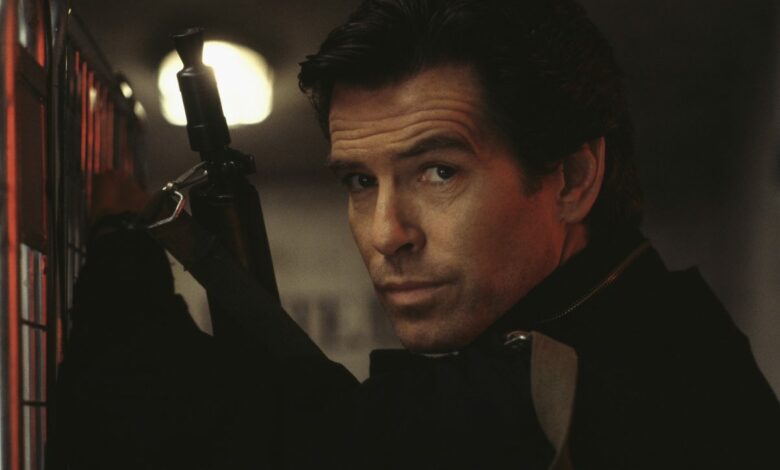
GoldenEye(1995) marked the debut of Pierce Brosnan as James Bond. The film, directed by Martin Campbell, revitalized the Bond franchise and established Bond’s relevance in the Post-cold war era.
When the seventeenth James Bond film, GoldenEye, reached movie theaters in 1995, The fictional MI6 agent, James Bond, created by Ian Fleming, was facing the biggest crisis of his career, both on-screen and off-screen; the last Bond film, License to Kill, starring Timothy Dalton, was released in 1989, and it had massively under-performed at the box office. This had put a big question mark over the future of Bond films; over their ability to survive in a market place driven by hardcore action films of Stallone and Schwarzenegger. Making things more difficult for Bond, the geopolitics in which Bond operated was changing rapidly: the dissolution of U.S.S.R and the end of the cold war pretty much made the Bond character obsolete. Bond was the archetypal ‘Cold Warrior’, and with the fall of the communist Soviet Union, he didn’t seem relevant anymore. Then there was the politics in the film industry itself: The fate of the Bond franchise was irrevocably tied to the floundering MGM\UA studios, where lawsuits and bankruptcies was the order of the day. The Broccoli family, the custodians of the James Bond character, was trying hard to retain control of their lucrative franchise amidst the turmoil at the home studio. With the studio in such a bad shape, it was becoming impossible to mount a massive production that every Bond film demanded. Also, Six years was a long gap between Bond films; they used to turn out one Bond film every 2 years those days. On top of that, Timothy Dalton resigned as Bond, forcing the producers to find a new actor to play Bond. They settled on the 42-year-old Irish actor Pierce Brosnan; Brosnan had missed out playing Bond earlier when his contractual obligations on the T.V. series Remington Steele stopped him from starring in The Living Daylights(1987). But the biggest setback of them all was the fact that, producer Albert R. ‘Cubby’ Broccoli, the patriarch of the Bond film franchise, suffered a heart attack and was unable to perform his production duties. He had to defer control to his daughter Barbara R. Broccoli and stepson Michael G. Wilson; both of them will steer the Bond franchise from here on, as Cubby Broccoli would die within six months of the release of GoldenEye. All this meant that there was immense pressure on GoldenEye to succeed. If the film had flopped, chances are that there would not have been another James Bond film. But it is to the credit of the Broccolis, Brosnan and the first time Bond director Martin Campbell that they managed to, not only resurrect Bond by delivering the biggest Bond blockbuster until that time, but also ended up making, what I consider, the best Bond film since On Her Majesty’s Secret Service(1969).
As the Bond film charged with reintroducing James Bond to a new age as well as introducing a new (actor playing) James Bond, GoldenEye had to begin big; and this it accomplishes with style. The film opens circa 1986, in the erstwhile Soviet Union, where we see Bond breaking into a chemical weapons facility. The film has one of the most spectacular pre-credits sequences for any Bond movie. We see Bond bungee-jumping from the top of a reservoir into the chemicals plant; We soon find out that he is not alone; he is accompanied by his friend and fellow agent. 006 Alec Trevelyan(Sean Bean) in the mission. After a fierce ɡսոfıɡһt with the Russian General Ourumov(Gottfried John) and his forces, Trevelyan is captured and then killed, while Bond manages to escape, after successfully destroying the weapons facility. The presence of 006 gives an interesting dimension to the sequence – usually Bond operates alone – and this becomes a strong foundation for a more personal story of antagonism that will evolve through the course of the film. The escape of Bond in this sequence employs an audacious and purely fantastical set piece, in which Bond chases a plane on his bike, and then jumps off the mountain top, still chasing the plane, and as they are in a free fall, he manages to catch up to the plane, get inside, take control of the aircraft and fly out to safety, as the facility explodes in the background. Thus, this opening scene forms a perfect bridge between the old, fantastical Bond films (especially the Roger Moore ones) and a new modern sensibility that the makers are planning to adopt with this film. The film then cuts to the (mandatory Bond) credit sequence, which again is very interesting: filled with images symbolically representing the fall of the Soviet Union (even though I am not a big fan of the title song, or the score by Eric Serra.)
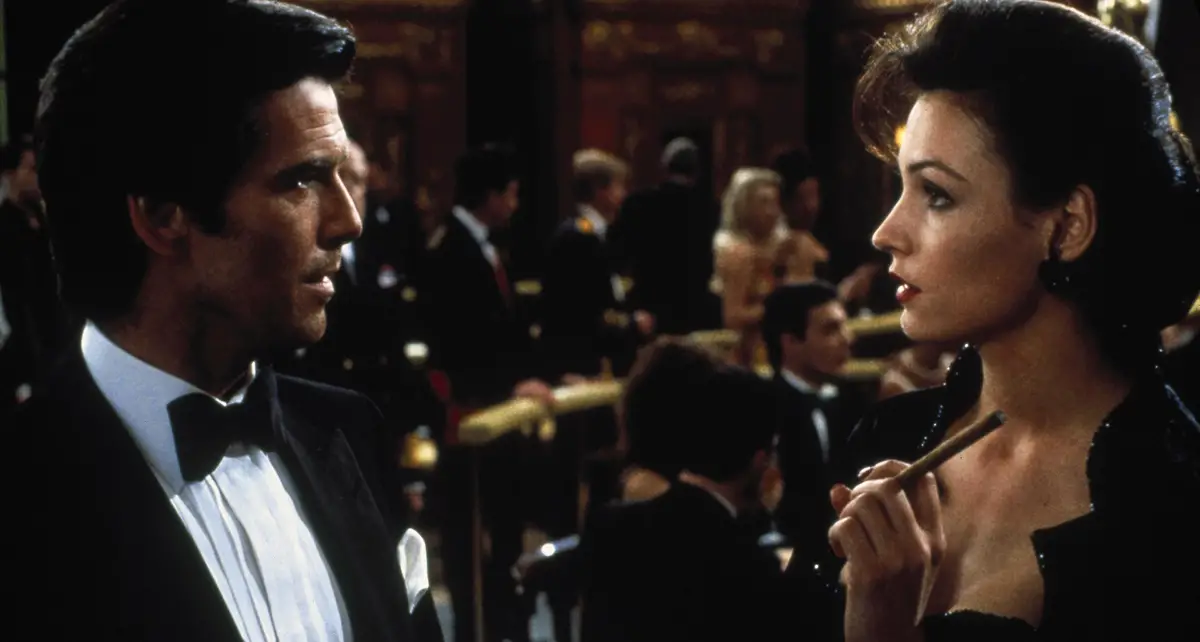
Post credits, the film, literally, cut to the chase; without much ado, director Campbell gives us the expected Bond car chase that’s part and parcel of every Bond movie. While Bond is driving along in Monte Carlo (with a female companion send to psychologically evaluate him by his superior ‘M’), he is challenged to a ‘match race’ by a stunning female, Xenia Onatopp (Famke Janssen), riding a red Ferrari. As they careen dangerously along steep mountain slopes and narrow road turns at top speed, we get a feeling that Ms. Onatopp is a little abnormal: she seem to take an almost orgasmic pleasure in the race; it is later confirmed that she is a member of the Janus crime syndicate. Moreover, she is a sadistic ‘lust’ murderer: who enjoys torturing her enemies by crushing them between her thighs. Now back to the race, Bond lets Onatopp win it in the end, as his female companion has had enough of this egoistical contest, But Bond encounters Onatopp again that night in the casino, and his suspicions are raised when he realizes that she is of Georgian nationality and the Ferrari she’s driving is counterfeit. His suspicions are confirmed, when Onatopp, with the help of an accomplice, steals a Tiger Euro-copter during a military demonstration. The stealing of the Helicopter was part of a conspiracy by General Ourumov, who is now a member of Janus syndicate, to steal a cold-war era Satellite weapon named GoldenEye – that is capable of decimating a large area using EMP (Eelectromagnetic pulse) – from a space center in Severnaya, Siberia. Ourumov, with the help of Onatopp, ambush the space center, kill everyone there , steals GoldenEye and fly away to safety in the Euro-copter. They also sets off one of the GoldenEye satellites to destroy the space center, thereby erasing all evidence of the theft. But Natalya Simonova (Izabella Scorupco), a programmer at the center, manages to escape the blast and find her way to St. Petersburg. This coincides with the arrival of James Bond in the city. Bond is there to investigate the disappearance of the Tiger Helicopter, as well as the truth about the GoldenEye blast, which the Russians had covered up.
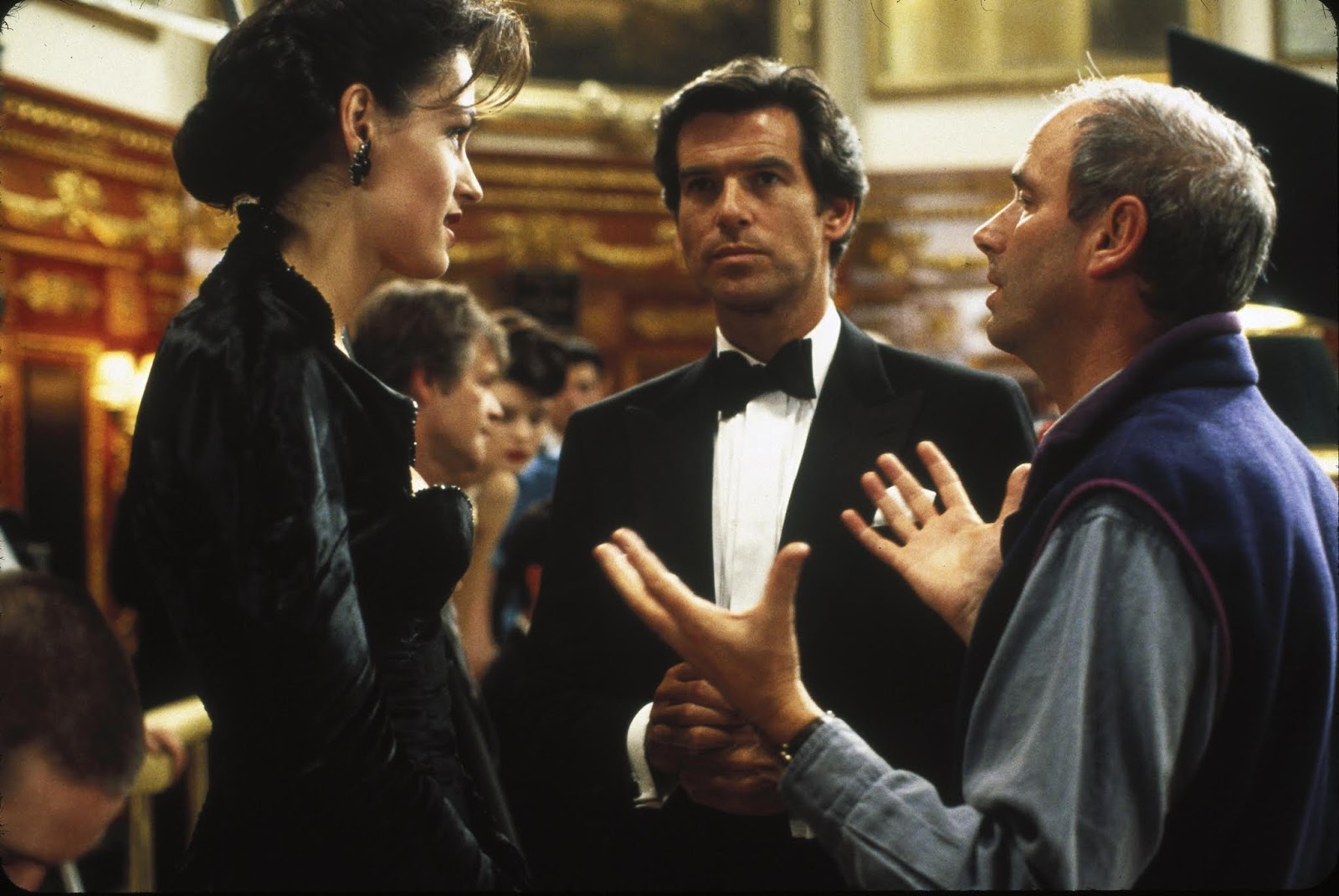
Bond is received by CIA agent Jack Wade(Joe Don Baker), who puts him in touch with his old nemesis , the ex KGB agent-turned-gangster Valentin Zukovsky. After a rough reunion between the old foes, Zukovsky arranges for Bond to meet the head of the Janus syndicate. But before that, Bond is ambushed by Onatopp in the hotel swimming pool; with her brand of acrobatic sex, she tries to kill Bond, but Bond manages to overpower her and forces her at ɡսո point to take him to Janus’ leader. During the meeting, Bond is shocked to learn that Janus is led by by his old (presumed ԁеаԁ) friend and 006, Alec Trevelyan. Trevelyan had faked his ԁеаtһ at the beginning, to defect to the Soviet side, and he is now planning an attack on England as revenge for the ԁеаtһ of his parents; he is descended from the Cossacks who were betrayed by the British to the Soviet Union after collaboration with the Axis powers during World War II. This ‘reunion’ scene between Trevelyan and Bond is one of the best written, directed and performed scenes in a Bond film. Their meeting takes place in an abandoned warehouse filled with relics from the communist past of Russia: broken statues of Lenin and red symbols like sickle and hammer dot the background: a nod to the main theme of the film, where the contemporary Russia of Gangsters and crime syndicates (that have risen post the dissolution of USSR) becomes the stage for the grand duel between 007 and the former 006, who is now the head of a dangerous crime syndicate. It’s a brilliant conceit to establish the relevance of James Bond in the post-cold war era. The conversation that takes place between the two is also one of the longest in the film, where Bond’s sense of betrayal and his cold determination to bring down his old friend is allowed to sink in.
But after this more contemplative scene, the film unfolds at a breakneck pace. Like all classic Bond villains, Trevelyan does not believe in killing Bond quickly. After talking him down for a long time, he has Bond knocked out with a poisonous dart, and then have him trapped in the stolen Euro-copter alongside Natalya Simonova (who was captured by Trevelyan’s goons in the interim). The Euro-copter is armed to destroy itself, but before that happens, Bond and Simonova escapes. The escaped twosome are captured by Russian forces and brought to defense Minister Dimitri Mishkin. During a heated exchange between Bond and Mishkin, Simonova confesses that Ourumov is the traitor, who set off the blast in Survenaya and has stolen the GoldenEye. At this very moment, Ourumov barges in, kills Mishkin and attempt to frame Bond for the murder. An all out ɡսո battle breaks out, with Bond and Simonova on one side and Ourumov and the Russian Army on the other. The scene is a throwback to the film’s opening sequence: where Bond and Trevelyan battled Ourumov ; only this time, Simonova is held hostage by Ourumov. Bond goes all out to rescue her from his clutches, which culminates, first, in the spectacular Tank chase through the streets of St. Petersburg, and then, in a tense standoff inside an armored train, where Bond confronts Trevelyan, Onatopp and Ourumov to save Simonova’s life. In the ensuing ɡսոfıɡһt, Ourumov is killed, while Trevelyan and Onatopp escapes, locking Bond and Simonova inside the Train, which is timed to explode in minutes. But as always, Bond uses his wits and his gadgets to escape from the life and ԁеаtһ situation, even as Simonova manages to find out that the location of the other space center from which Trevelyan is planning to use the remaining GoldenEye satellite is in Cuba. The rest of the film is fairly predictable: Bond and Simonova fall in love; they travel together to Cuba to foil Trevelyan’s world domination plan; and in the grand finale – filled with ɡսոfıɡһts, explosions, fisticuffs and more talking from Trevelyan – they manage to do just that. In the end, Bond kills Trevelyan by dropping him from the top of the massive dish antenna that Trevelyan was using to control the satellite, but not before making it explicitly clear that this is something he’s doing for himself, rather than for queen and country.
This ‘personal’ dimension gives the film more emotional resonance than many other Bond films – as opposed to Bond tracking down someone like Ernst Stavro Blofeld. The film plays out more like an Anthony Mann Western (Winchester ’73, Man of the West), where there is an emotional connect between the protagonist and the antagonist. Also, Pierce Brosnan, very much cool, macho, bullet-proof in the mold of Sean Connery, has the ability to project a certain amount of vulnerability that holds him in good stead while bringing this Bond to life. In that regard, he’s a great mix of the traditional and modern and hence, perfectly suited to bring the Bond into the 1990’s. Though, i don’t consider this his best Bond performance, that would come in his second Bond outing, Tomorrow Never Dies(1997). Here, we get the feeling that he’s just getting into the skin of Bond, and his performance isn’t as confident as in the subsequent Bond films. The real star of the film is director Martin Campbell, who manages to juggle the logistics of mounting such a huge production, with its spectacular action set pieces – the St. Petersburg tank chase is yet to be topped – and giving a new look and feel to the Bond film in tune with the 90’s. The film came at a time when movies were entering the digital age: directors like Steven Spielberg and James Cameron had revolutionized Action\adventure movies with Jurassic Park and Terminator 2, which were filled with fantastical images achieved through CGI. Also, Cameron had just made his own Bond adventure, True Lies(1994), with Arnold Schwarzenegger, which had some of the cutting edge action sequences of the time rendered with the help of the latest in CGI. So it was a given that this Bond had to at least match up (if not top) those films to find favor with the audience. Though Bond films have always relied on practical stunts, this film manages a perfect mix of real stunts and computer effects. Campbell is also successful in updating the Bond girls to the changing times, especially the character of Onatopp which appears to me as a clever mix of Pussy Galore and Oddjob from Goldfinger(1964) – the main villain’s sexually perverse, grotesque sidekick. Martin Campbell would go on to revitalize Bond again, in 2006, with his adaptation of Casino Royale, which would introduce Daniel Craig as Bond. As entertaining and wonderful GoldenEye is, one big problem i have with the film is the constant self-referencing or self-winking that the film seems to indulge at multiple points relating to the character of James Bond. Perhaps in a good-intentioned, but ill-advised attempt to make a politically incorrect Bond palatable to a politically correct generation, we have everyone from Bond’s female boss ‘M’, to Alec Trevelyan to the Bond girl and Bond himself repeatedly commenting on the outdated character traits of Bond, referring to him repeatedly as a dinosaur, a boy with toy etc. After a point this begins to grate, because Bond films may never takes itself seriously (always having fun at its own expense), James Bond is a very ‘straight’ and serious character, who does not indulge in any sort of self-reflection, and is never ‘in on the joke’. That’s what make these films so much fun, otherwise they would all end up like the 1967 adaptation of Casino Royale, which was a film that made a mockery of Bond.
GoldenEye was the first James Bond film I ever saw; the first Bond film I watched in theaters. I was just into my teens, and till then I had read and heard a lot about James Bond. So watching GoldenEye was a special experience, something I cherish to this day. Also, Brosnan was the first Bond I saw, so I have a special connect with him too. Over the years, I went back and watched all the older Bonds, even as Bond went from Brosnan to Daniel Craig under my watch, and for me, Brosnan is the best Bond after Sean Connery. As for the film, I watched it again a few days ago , and it still holds up, even though some of the the CGI shots look a little tacky. By the way, two years after GoldenEye’s release , it conquered a whole new medium – the Nintendo 64. The tie-in game developed by Rare based on the film was superb fun, particularly on a 4-players split-screen, and it’s still recognized as one of the best movies to game adaptations ever made.

